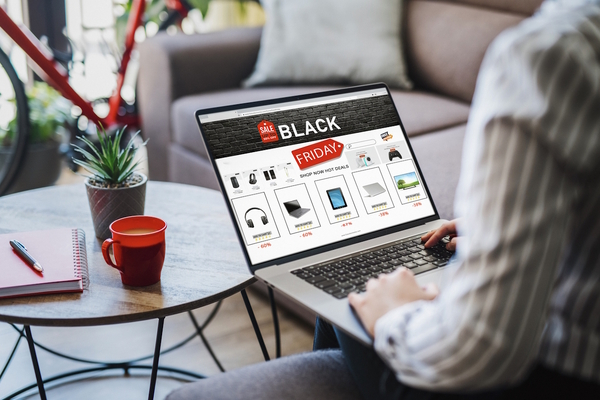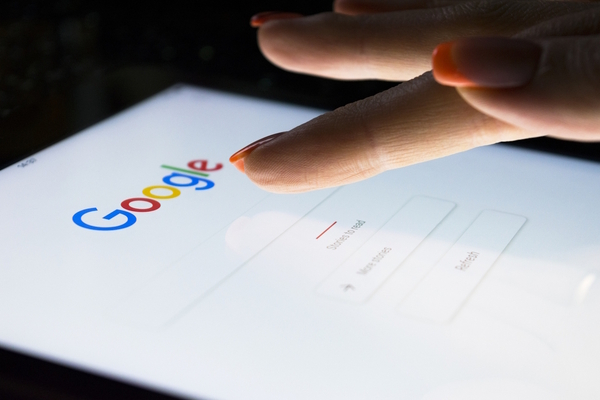Power Brands: how you can become part of this exclusive club
Sponsored by GfK
Jutta Langer, Vice President Consulting, GfK and Madalina Carstea, Head of Global Solutions, Marketing and Consumer Intelligence, GfK
Accounting for just 10 per cent of global brands, Power Brands might look like a rare breed at first glance. But with a 40 per cent share of worldwide revenues, according to GfK point of sale data, they are a force to be reckoned with – and come with a status many brands seek to equal. The question is: how do brands achieve the Power Brand status at a time when consumers are going through a cost of living crisis and companies are increasingly pressed to find more budget-friendly alternatives?
According to consumer and market intelligence experts, the opportunity is out there for brands that wish to seize it. Adopting the right strategies will, of course, be pivotal to success. In this article, GfK provides five key recommendations for businesses looking to move into the Power Brands arena, especially those currently residing in the Exclusive or Mainstream segments.
First, let’s look at what it means to be a Power Brand.
Power Brands defined
The Power Brand status offers the best of both worlds: a balance between mass market appeal with the ability to charge premium prices. Hence, they account for a highly significant proportion of global revenues compared to the actual number of Power Brands on the market.
Whilst all types of brands have their own space in the market and their own growth strategies, Power Brands do have the edge in terms of sales volumes, brand strength and price elasticity. Also, when it comes to customer loyalty, they are stabler and less prone to competitor threats than Mainstream and Smaller Brands, and they only narrowly lose out to Exclusive Brands in their ability to charge premium pricing.
On the other hand, achieving Power Brand status is not straightforward. To rise to, and stay at, the top of their game, these brands must deploy strategies that drive both premium pricing and high sales volumes. This is a fine balancing act that goes far beyond products and services. It requires precise targeting and messaging, along with the articulation of brand purpose, values, quality and uniqueness – all at a time when marketing budgets are being squeezed to the limit.
So, how do you become a Power Brand?
Invest in getting the basics right
Becoming a Power Brand requires mass market distribution: making products available in as many stores, websites and territories as possible. Brands will also need an omnichannel communications strategy that covers all relevant traditional and digital channels, to ensure maximum exposure across each audience segment.
Embracing these tactics is the only way to support the levels of accessibility, brand awareness and sales volumes needed to attain Power Brand status. This means investing heavily in distribution and advertising (digital and TV) and building brand advocacy through relationships with established influencers and key opinion leaders (KOLs). But is this really an opportunity at a time of economic crisis or just a massive financial risk?
Madalina Carstea, Head of Global Solutions, Brand & Marketing Intelligence at GfK, explains: “Historically, brands that have continued with their investment through economic turbulence have come out stronger, with the ability to maintain or increase their premium and market share.
“This represents a great opportunity for brands that haven’t yet achieved Power Brand status to take advantage of the space freed up by competitors that stop or reduce investment. Their share of voice and share of space is up for grabs by aspiring Power Brands with the right approach. In essence, your products need to be ‘findable’ in more places and more spaces than your competitors’. A best-in-class distribution strategy is key to supporting the volumes and the brand at the same time, so learning how to optimise your distribution as a company and surpass your competitors in this space while balancing your investment is essential.”
The right tools can help you develop highly targeted communications and distribution investment strategies. For example, state-of-the-art marketing analytics software can help you refine spending levels across the optimal combination of digital and offline channels, so you achieve maximum reach and ROI. Access to powerful, granular POS data will inform your distribution activities by pinpointing where and when your target customers want to buy. These are both areas where GfK can help.
Ensure communications are consistent
As seen above, an omnichannel communications strategy is essential. What is equally important is that every part of this strategy is consistent and coherent. This applies to both internal and external communications, with the prerequisite that brands wishing to enter the Power Brands market must obtain the commitment and support of all business functions.
Jutta Langer, Vice President Consulting at GfK, elaborates: “Creating and maintaining brand attachment is a must for Power Brands, as this helps consumers emotionally connect with the products. This is what ultimately drives loyalty and allows the brands to charge premium prices. But it’s a hard target to hit in today’s climate, with 60 per cent of people saying they may stop buying their favorite brands due to the cost of living and 85 per cent saying they are actively seeking cheaper alternatives.
“For Power Brands, keeping the brand image and messaging consistent across all consumer touchpoints and at every stage of the buying journey is essential to creating and maintaining brand attachment. You will also need access to accurate, current and highly granular consumer and market data that represents a single source of truth.”
Looking specifically at consistent pricing communications, SEO is an area that warrants special attention. As the most searched-for brand type, it is critical that Power Brands get all their digital activities – but especially SEO – 100 per cent on-point. After all, the typical Power Brand consumer may be willing to pay a premium for their favorite products, but they’re also price-savvy, and will spend longer searching for the best deals and promotions for big-ticket items, according to GfK FutureBuy data. Research often continues right up to the point of purchase.
Getting this right again boils down to consistency. That means synchronising and controlling both standard and promotional pricing across stores and online channels, and ideally running offers at the same time. This will stop brands selling more units on promotions than they should – something which can easily erode the brand – while protecting profit margins.
Offer the right mix of products, attributes and values
Power Brands tend to have more stock-keeping units (SKUs) than other brand types. This is because a range of products are needed to cater for diverse customer segments with differing needs, priorities, design preferences and values if the brand is to achieve mass market appeal.
At the same time, the typical Power Brand consumer is also looking for something unique to justify paying a premium. Brands therefore need to invest in quality of design and innovation to offer superior products that will delight customers at every turn and inspire a lasting emotional connection with, and attachment to, the brand.
Meeting core consumer needs before any frills are added is equally fundamental. Having the latest smartphone may make people feel like they own a status symbol, but the feeling will not last if the device does not perform well. More than any other brand type, Power Brands must blend quality, trustworthiness and desirability to strike the right balance. A tiered pricing model may be the solution for some brands.
Says Madalina Carstea: “It is crucial for Power Brands to understand the demographics of each audience segment, so they can position their brand to meet that target group’s wants, needs and aspirations. You need the ability to identify, understand and win your most valuable customer segments across any and all generational groups in both the short and longer term.”
Making the change: the path from Exclusive or Mainstream to Power Brand
If achieving the Power Brand status is the ambition of your business, below are some recommendations to assist in building your new strategic direction.
|
Exclusive brands |
Mainstream brands |
|---|---|
|
Make smart use of promotions to reduce the barrier to entry and drive volume |
Avoid promotions in favour of brand-building strategies focused on innovation |
|
Focus on building familiarity and trust by connecting with, and then delighting, a wider customer base |
Products must be seen as best in class and a cut above inferior brands; excellence, superior quality and uniqueness are all must-haves |
|
Expand online and offline advertising to broaden reach without losing that ‘premium’ feel |
Consider launching a new, premium version of existing brands |
|
Remember to balance frills and premium pricing with meeting consumers’ core needs |
Balance delighting the customer with continuing to meet their needs for functional, reliable products |
|
Consider a tiered pricing model to appeal to a range of budgets |
Align your brand with influencers or KOLs your audience segments will listen and relate to |
|
Extend distribution to drive access to the broadest possible consumer group |
Review your brand’s distribution strategy so you can more easily reach and resonate with the more premium-oriented consumer groups |
The challenge in successfully achieving Power Brand status is ensuring that individual elements are optimised and work together seamlessly to create a coherent and unique brand experience.
Looking to power up your brand? GfK can help
GfK will work with you to take your business to the next level. Our world-leading consumer and market intelligence services are underpinned by our global brand and category expertise – and a strong track record of consultancy success.
To find out how we can help you break into the Power Brands market, visit www.gfk.com/brand-and-marketing-performance today.

Business Reporter Team
Most Viewed
Winston House, 3rd Floor, Units 306-309, 2-4 Dollis Park, London, N3 1HF
23-29 Hendon Lane, London, N3 1RT
020 8349 4363
© 2024, Lyonsdown Limited. Business Reporter® is a registered trademark of Lyonsdown Ltd. VAT registration number: 830519543





